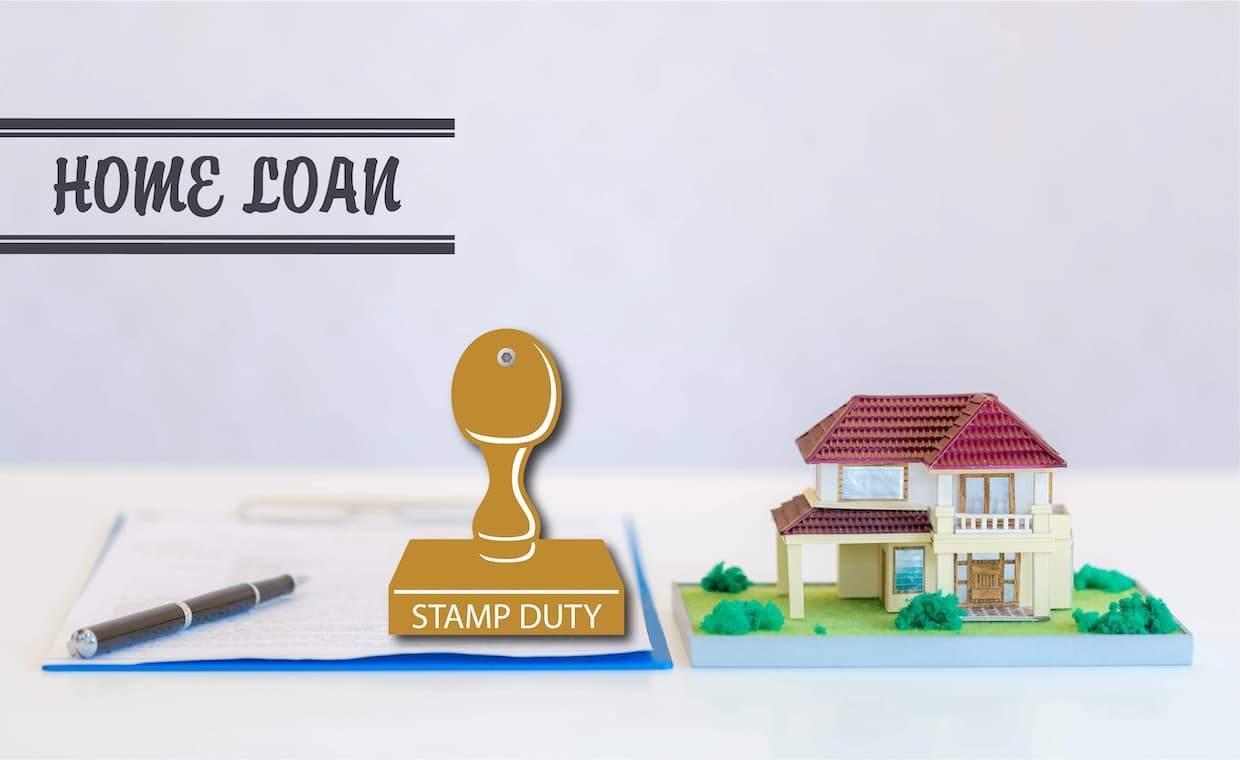
Paying home loan stamp duty charges is a legal requirement. It, protects you from future disputes. When you plan to buy a house, price is not the only significant expense you will have to make. There are various other costs and fees involved, and stamp duty charges are one of them.
What is Stamp Duty?
Home loan stamp duty is a direct tax levied by the state government on documents whenever a residential property changes hands. Payment of stamp duty on transaction documents is one of the key steps for registering the property in the buyer’s name. The government levies stamp duty charges on all properties, be it under-construction, newly completed or re-sale.
The housing loan stamp duty is charged under the Indian Stamps Act, 1899, although several states have enacted separate laws to deal with issues involving stamp duty.
Why Do You Need To Pay Home Loan Stamp Duty?
For state governments, stamp duty on home loan is a good source of revenue, and for home buyers, it is a legal requirement they need to fulfil to protect them from any future legal dispute over the ownership of their property.
A property transaction acquires legal sanction only after the buyer has paid home loan stamp duty charges. In case of any dispute in future, your house sale agreement serves as legal evidence. You must pay stamp duty within a specific timeframe, or you would be liable to pay the penalty along with the outstanding stamp duty.
What is a Registration Fee?
Once you have paid the stamp duty charges, you register the ownership document under the Registration Act, 1908. The government maintains a record of all property purchase transactions. Once you have paid the stamp duty and registration fee, your name is added to the records. The registration should be done within four months from the date of execution of the property deal.
How is Home Loan Stamp Duty Calculated?
The stamp duty is based on the value of the property transaction or the prevailing circle rate, whichever is higher. Circle rate, also known as a ready reckoner rate, is the minimum rate that the government notifies from time to time for sale or purchase of a property. Stamp duty rates differ from state to state. Within a state, the rates could vary depending on where the property is located.
There are different rates for properties falling under the jurisdiction of municipal corporations, municipal councils or gram panchayats. The age of the property also determines how much stamp duty you will have to pay on it. Stamp duty, at times, also depends on the age or gender of the home buyer, with certain states allowing concessions if the property is registered in the name of a woman or if the buyer is a senior citizen. But such concessions are temporary and could change from time to time.
Documents Required for Payment of Stamp Duty
While most of the documents are common, you require additional documents in some states. Following are some of the documents you should keep ready at the time of paying stamp duty and registration.
Both buyer and seller of the property have to submit documents to prove their identity. Documents such as passport, driving license, and Permanent Account Number are accepted as proof of identity.
List Of Documents
The original sale deed with two photocopies.
• Proof of stamp duty paid.
• Proof of payment made to the seller.
• Tax certificate (for a second-hand property).
• Proof of payment of registration fee.
Modes of Paying Stamp Duty
With the advancement in technology there exists multiple modes of paying stamp duty. All legal and acceptable. Home buyers can pay stamp duty by any one of the following modes:
Physical Stamp Paper
Paying stamp duty by way of physical stamp paper is the most common mode. For this, you need to purchase stamp paper from authorized sellers. The stamp papers mention the details of land registration charges. In case the price of the property is high, physical stamps can be inconvenient.
Franking
To pay stamp duty using this method, you need to visit a franking agent who will apply a stamp to your property papers.
Paying Stamp Duty Online
Stamp duty can also be paid online through the official website of Stockholding Corporation of India.
Does a Home Loan Include Stamp Duty Charges?
Stamp duty is paid over and above the price of the property, and as such banks in India do not include it in the home loan. Like in the case of home loan down payment, you have to arrange home loan stamp duty on your own. The stamp duty can be paid through several options such as cash, cheque, demand draft, pay order, RTGS, NEFT and account to account transfer. You should contact your nearest e-stamping centre before initiating any electronic fund transfer.
For more of such information do check the articles below
What is Stamp Paper? Know the Difference of Judicial and Non-Judicial Stamp Paper?
10 Mistakes to Avoid While Taking a Home Loan!
Author Bio
Devendra Bhandari






























